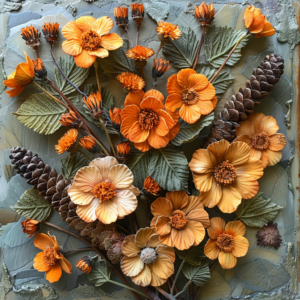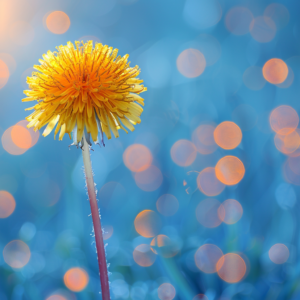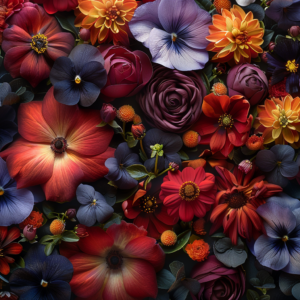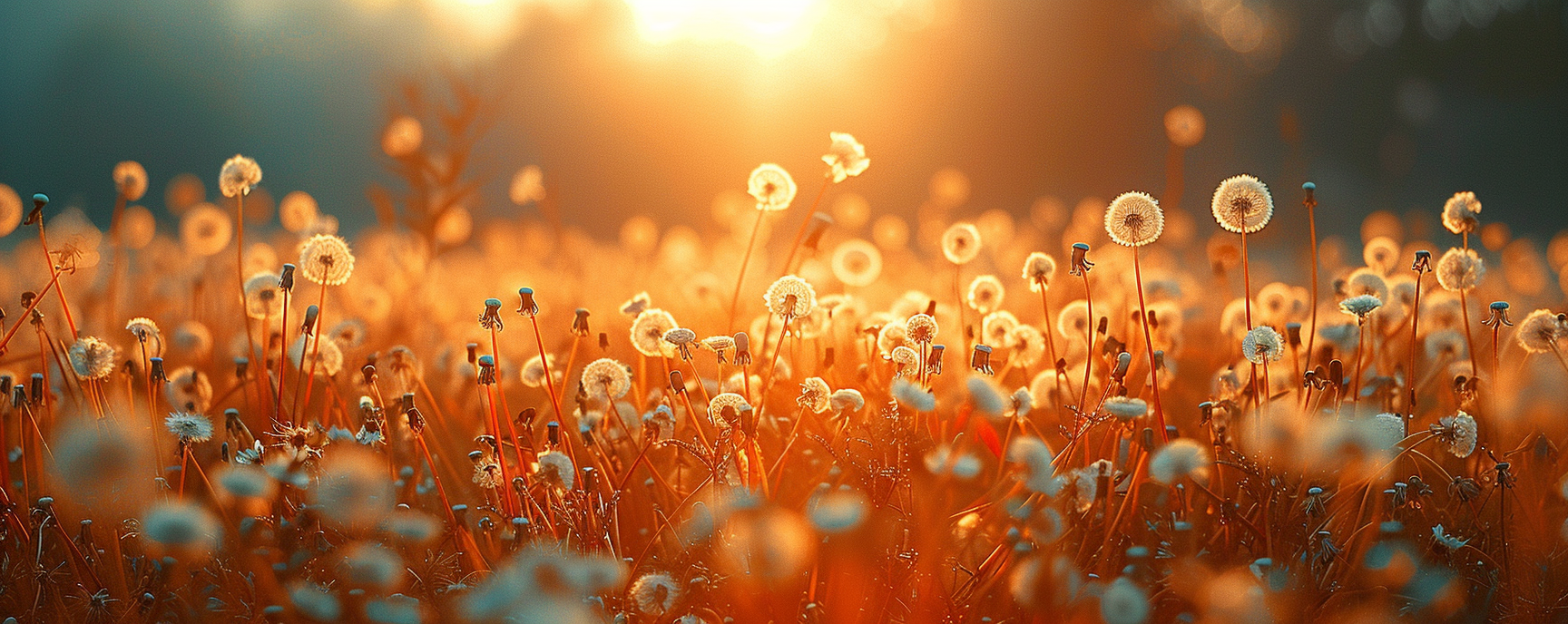In the wild, shrimp primarily feed on algae, biofilm, decaying plant matter, and small organisms. In captivity, they are typically fed commercial shrimp pellets or flakes. However, there is a growing interest in diversifying their diet to mimic their natural feeding behaviors more closely, leading to exploration of alternative feeding options.
Feeding flowers to shrimp and its potential benefits.
One alternative is the incorporation of edible flowers into the diet of shrimp. This practice not only enriches their nutritional intake but also introduces a variety of natural compounds that may contribute to their overall health and well-being. Edible flowers offer a spectrum of vitamins, minerals, and bioactive compounds, potentially enhancing the vitality and coloration of shrimp while fostering a more natural habitat within the aquarium.
Choosing Edible Flowers
When selecting flowers for shrimp consumption, ensuring they are free from pesticides and other harmful chemicals is paramount. Pesticide residues can be toxic to shrimp and may disrupt their delicate ecosystem within the aquarium. Therefore, sourcing flowers from reputable sources or opting for organically grown varieties is essential to safeguarding the health of the shrimp. Ideal edible flowers for shrimp should be free from toxins, possess a suitable texture for consumption, and offer nutritional value. Additionally, flowers should be readily accepted by the shrimp and easily digestible to prevent any gastrointestinal issues. Considering these factors ensures that the chosen flowers not only provide sustenance but also promote the overall well-being of the shrimp.
You may want to first test your edible flowers on a select group of shrimp before introducing the flowers to all of your tanks.

Examples of commonly available edible flowers suitable for shrimp.
Several commonly available flowers are suitable for shrimp consumption, including but not limited to marigolds, hibiscus, dandelions, and roses. These flowers offer a range of nutrients and bioactive compounds that can benefit shrimp health and enhance their diet diversity. Experimenting with different varieties allows aquarists to tailor the diet to the specific needs and preferences of their shrimp.
Preparation and Feeding Guidelines
Step-by-step instructions for preparing flowers for shrimp consumption.
Before feeding flowers to shrimp, it is crucial to properly clean them to remove any dirt, debris, or chemical residues. Rinse the flowers thoroughly under running water and inspect them for any signs of contamination. Once cleaned, flowers can be offered to the shrimp whole or chopped into smaller pieces for easier consumption.
Recommended feeding methods: fresh, blanched, or frozen.
Fresh flowers can be directly added to the aquarium, allowing shrimp to graze on them at their leisure. Alternatively, flowers can be blanched briefly in boiling water to soften them before feeding. Blanching can help break down tough fibers and improve digestibility for the shrimp. Some aquarists also freeze flowers to preserve them for future use, thawing them before offering them to the shrimp.
Cautionary notes on potential risks and proper handling.
While feeding flowers to shrimp can be beneficial, it is essential to exercise caution to avoid overfeeding or introducing contaminated flowers into the aquarium. Overfeeding can lead to water quality issues, while contaminated flowers may pose health risks to the shrimp. Additionally, monitoring the shrimp’s behavior and adjusting feeding quantities accordingly helps maintain a balanced diet and optimal aquarium conditions. Regular water testing and observation are essential to ensuring the well-being of the shrimp in the long term.
Nutritional Value of Flowers
Flower petals are not only visually appealing but also contain a range of nutrients beneficial to shrimp health. These include vitamins such as vitamin C, vitamin A, and various B vitamins, as well as minerals like calcium, potassium, and magnesium. Additionally, flower petals are rich in bioactive compounds such as antioxidants, flavonoids, and carotenoids, which contribute to their nutritional value and potential health benefits for shrimp.
While both flower petals and leaves offer nutritional value, flower petals often contain higher concentrations of certain nutrients, particularly antioxidants and pigments. Additionally, the composition of nutrients in flower petals may vary depending on the species and stage of flowering. Comparatively, leaves may provide a broader spectrum of vitamins and minerals but generally contain lower levels of bioactive compounds found in flower petals.
Carotenoids, such as beta-carotene and astaxanthin, are pigments commonly found in flower petals that contribute to their vibrant colors. These compounds not only enhance the visual appeal of flowers but also offer antioxidant properties and potential health benefits for shrimp, including boosting immune function and enhancing coloration. Flavonoids, another group of bioactive compounds, have anti-inflammatory and antioxidant properties, supporting overall shrimp health and vitality.
Dandelions:

Dandelions are a nutritional powerhouse, rich in vitamins A, C, and K, as well as minerals like calcium and iron. Their leaves and petals contain beneficial compounds such as beta-carotene and lutein, which promote eye health and immune function in shrimp. Additionally, dandelions possess diuretic properties and may aid in digestion and detoxification.
Observations from feeding experiments
Feeding dandelions to shrimp has yielded positive results, with many aquarists reporting increased vitality, breeding activity, and vibrant coloration in their shrimp populations. Shrimp readily consume dandelion leaves and petals, making them an excellent addition to their diet.
Impact on shrimp behavior and coloration.
Dandelions have been observed to stimulate natural foraging behaviors in shrimp, encouraging exploration and grazing within the aquarium. Regular consumption of dandelions may also intensify the coloration of shrimp, particularly red and orange hues, due to the presence of carotenoids in the petals.
Nasturtiums:
 Nutritional profile and medicinal properties.
Nutritional profile and medicinal properties.
Nasturtiums are valued not only for their bright flowers but also for their medicinal properties. Rich in vitamin C, nasturtiums boost immune function in shrimp and support overall health. The peppery taste of nasturtium leaves and flowers may also have antibacterial and antifungal effects, aiding in disease prevention.
Feeding observations and shrimp response.
Shrimp demonstrate a strong affinity for nasturtium flowers and leaves, eagerly consuming them when offered. Aquarists have noted increased activity and vitality in shrimp populations following the introduction of nasturtiums into the diet.
Potential benefits for shrimp health.
In addition to their nutritional value, nasturtiums may offer therapeutic benefits for shrimp, including immune support and disease resistance. Regular consumption of nasturtiums may contribute to the overall well-being and resilience of shrimp in the aquarium environment.
Brief overview of other tested flowers (Rose, Pansies, Chrysanthemum).
 Rose petals, pansies, and chrysanthemums have also been tested as potential food sources for shrimp. While their nutritional profiles vary, they all offer vitamins, minerals, and bioactive compounds beneficial to shrimp health. Aquarists have reported positive responses from shrimp when offered these flowers, with potential benefits including enhanced coloration, increased activity, and improved overall health. However, caution should be exercised when introducing new foods into the shrimp diet, and observation of shrimp behavior and water quality is essential to ensure compatibility and avoid adverse effects.
Rose petals, pansies, and chrysanthemums have also been tested as potential food sources for shrimp. While their nutritional profiles vary, they all offer vitamins, minerals, and bioactive compounds beneficial to shrimp health. Aquarists have reported positive responses from shrimp when offered these flowers, with potential benefits including enhanced coloration, increased activity, and improved overall health. However, caution should be exercised when introducing new foods into the shrimp diet, and observation of shrimp behavior and water quality is essential to ensure compatibility and avoid adverse effects.
While anecdotal evidence suggests benefits, rigorous scientific research is needed to understand the full impact of flower consumption on shrimp. Shrimp keepers are encouraged to diversify their shrimps’ diet by incorporating edible flowers alongside traditional feeds. This approach not only ensures a balanced diet but also stimulates natural foraging behaviors. Keepers should start with small quantities and observe their shrimp for any adverse reactions. Sharing experiences and results within the community can help build a collective understanding of best practices and innovative feeding strategies.










